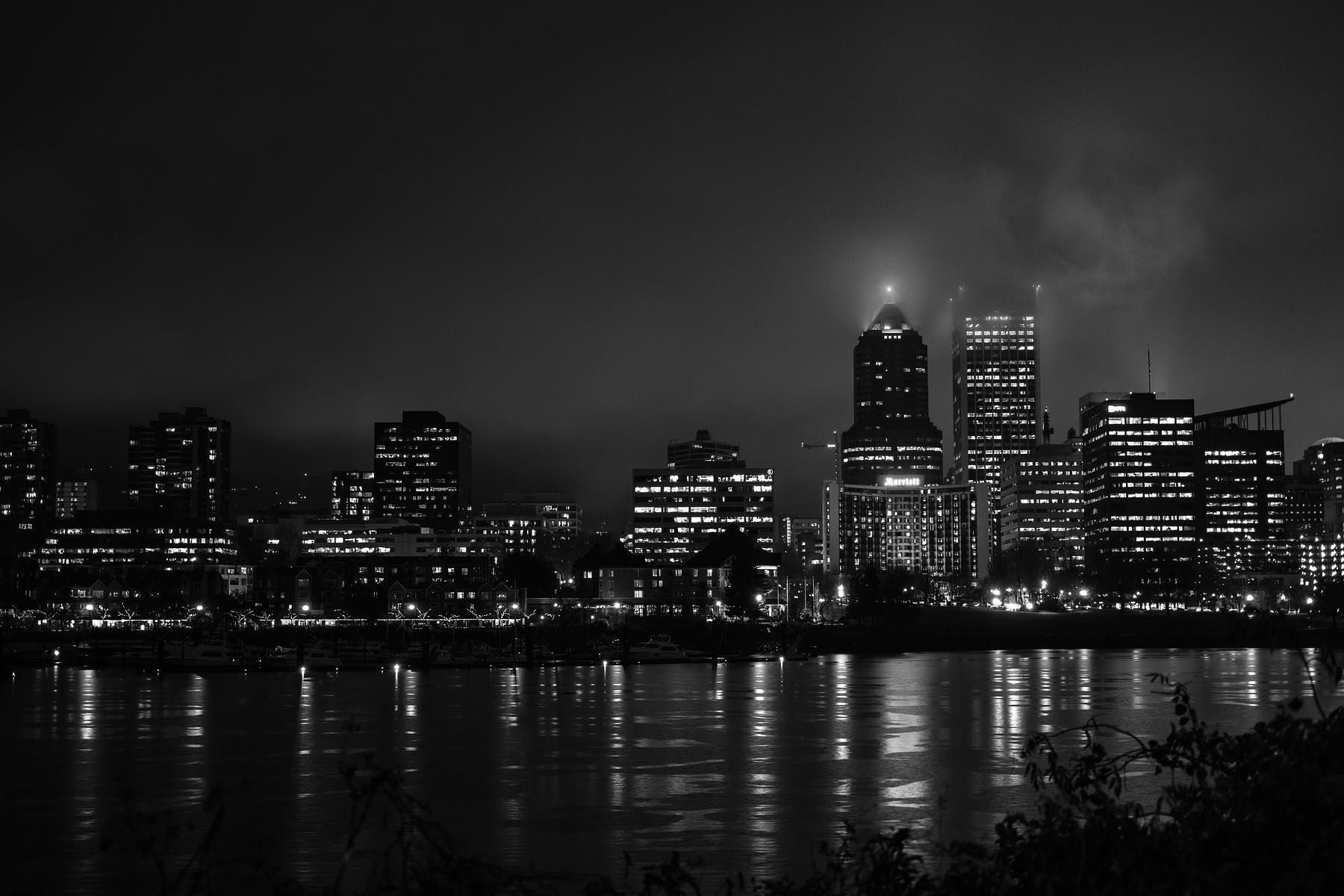I still hear people skeptically asking “did you have to touch it up in Photoshop?” as if the purity of the image has somehow been diluted. As someone who came up in film, the question never made sense to me. This is what people did before there was Photoshop. https://t.co/Uz7avrBQmk
— Mike Hall (@pdxmph) January 19, 2018
Maybe that was a little disingenuous, because I do understand the question. As someone replied to me, there’s Photoshop and then there’s Photoshop. There’s a picture that starts from a good place and ends up, with some digital darkroom work, in a much better place; and then there are pictures that start from all kinds of places and end up in a really bad place. And some people just don’t like photographs to not be “real,” for a definition of real I would be able to understand, even if I didn’t agree with it.
A coworker and I recently agreed, for instance, that HDR photography seems to go wrong more often than it goes right. And there was recently a thread on Metafilter about flickr’s most popular photos of 2017 where one person said, “they’re all just so processed and sterile and mostly without any kind of narrative to make you care why they were taken,” and another said, “this is some Thomas Kinkade-level kitsch.”
I suppose it depends on what you’re trying to do with your photography.
I’ve read some compelling cases for why photographers should try to get their initial exposure as close to what they’ve pre-visualized as they can. I agree with them, to the extent it will make your darkroom work easier. It’s the same reason I usually shoot with my camera’s RAW+JPEG mode: I get one JPEG using presets (maybe a monochrome film simulation, bumped up sharpness, stronger shadow tones; or a bleached out chrome look with muted shadows and harder highlights) and I get a RAW file. If the JPEG doesn’t work, perhaps because I didn’t check the highlights closely enough or let the shadows get swallowed up, I’ve got a RAW file to work with (and a reference JPEG to help me find my way back to what I was thinking in the moment, since RAWs start from a pretty flattened out place).
But I also like to get a RAW because months later I come back to something I shot in a much different place and see things in it that I didn’t when I shot it. So I’m grateful to have as much information as possible to take the image in a different direction.
I used to feel a little uncertain about that. I had no issue sharpening, dodging, burning, adjusting contrast or exposure. I did tend to stop at the edge of something of what I guess you’d call “mood.” I suppose I felt like a picture is a moment, and that a moment had a mood, so it felt dishonest. I was never averse to tuning pictures, or curating a collection to include the ones saying what I wanted to say, but I always tried to keep them anchored in the moment. Especially pictures of people. I’m not sure when that changed, but I’m positive Instagram, VSCO, Camera+ and other camera apps that provided a lot of filters probably helped with that.
I was a little resistant to the “get that vintage look!” thing when it started. Like, granting a picture taken yesterday the characteristics of an artifact created 25 years ago felt unearned. But the more I scrolled through my Instagram feed or poked around Flickr—and the more I just opened myself up to how those pictures made me feel instead of wondering what I thought about them—the more I began to appreciate them. Were some of the filters kind of crummy and over the top? Yeah. Definitely. I way prefer later apps that came along. VSCO, for instance, has done a nicer and more refined job than Instagram. But despite the occasional garishness, it occurred to me that these tools were allowing people to play with mood and tone, opening up a kind of expression that hadn’t previously been available to people who weren’t seriously invested in the craft of photography.
So I came down on a side, I guess. I’m more willing to play around with mood and tone. I’m more okay with revisiting a picture and seeing if there are other stories it could tell or feelings it could evoke and then seeing if I can get them to come out. I especially love playing around with things I take with my Lensbabys because they’re already not at all what I saw before I put camera to eye. Some days I like to just put on the headphones and hunker down in front of Lightroom, looking for images that could suit the music I’m listening to, then working to blend their tone with the music. For instance, I spent a lovely evening working on coast and skyline photos to this album:
And that, in the end, is what I was trying to get at with that tweet. Photographs have never really been “pure” in the sense that they’ve been subject to post-exposure manipulation for about as long as they’ve been around. And I’ve never been too fussed about doing that with a computer instead of an enlarger, a dodging paddle, and a handful of color filters. I believe that a photographer trying to imbue an image with a particular mood or emotive truth is no different from a poet or painter trying to do the same thing in their own medium. I’m okay with that happening at the moment of capture, or beyond.
